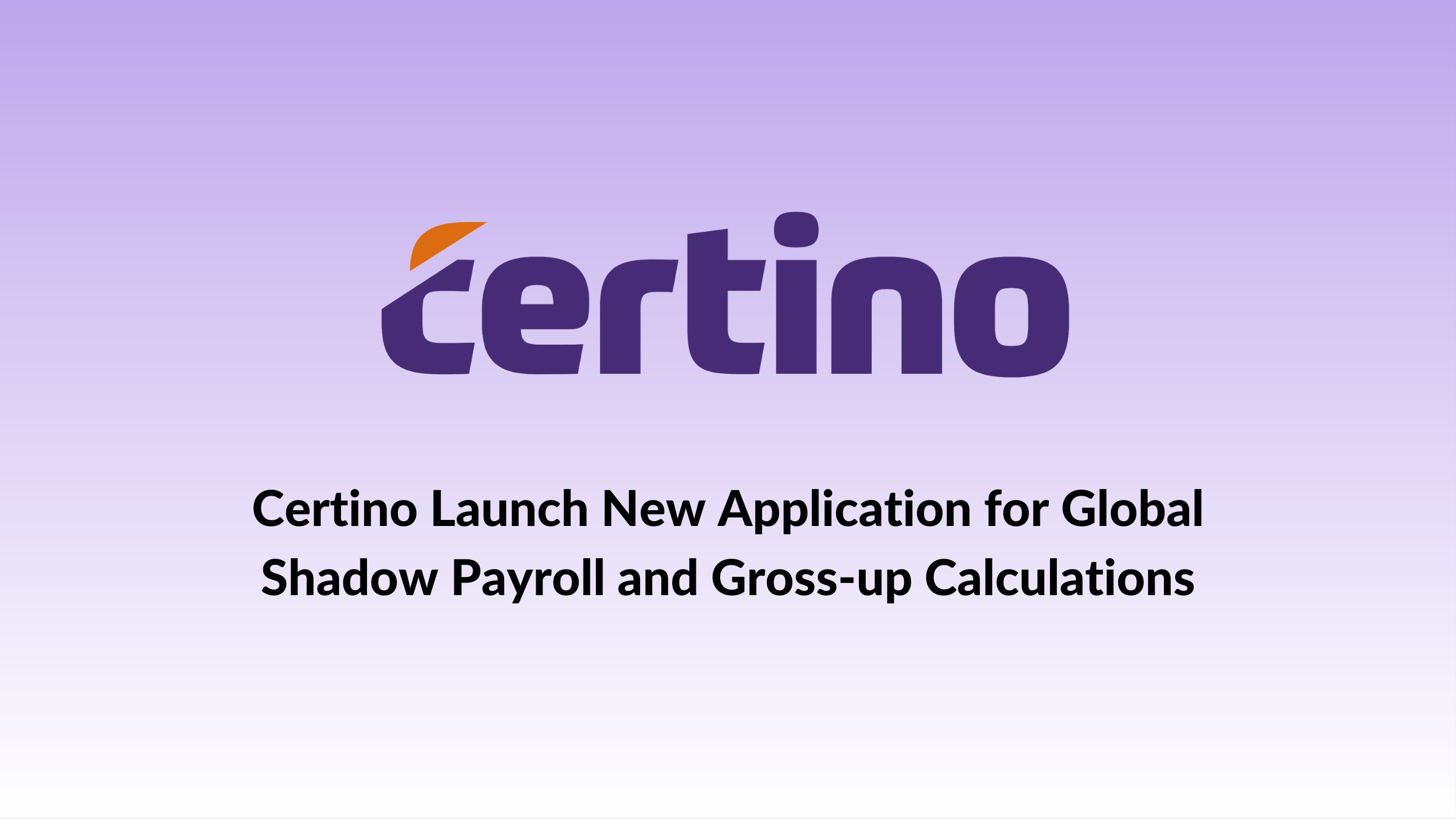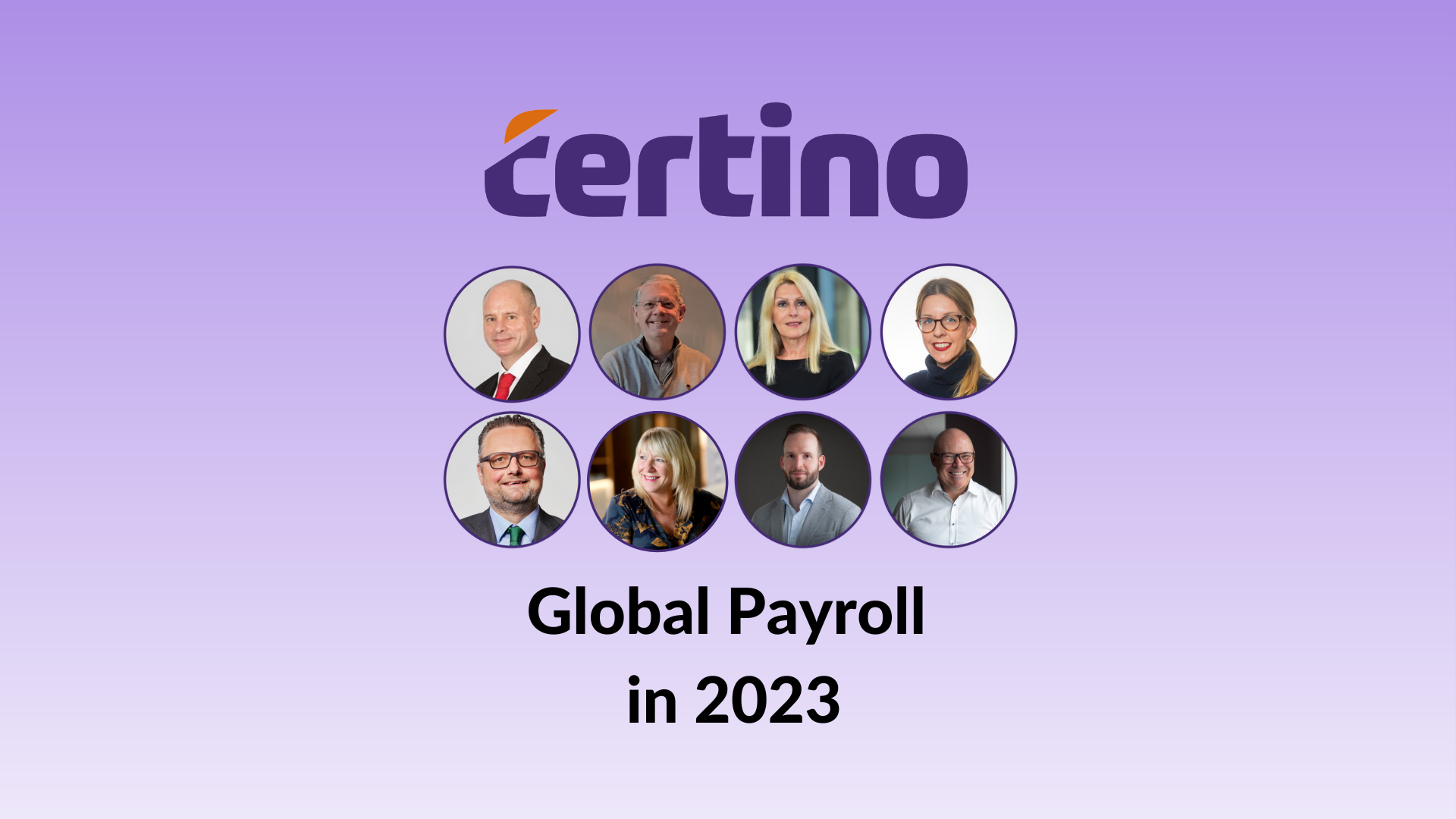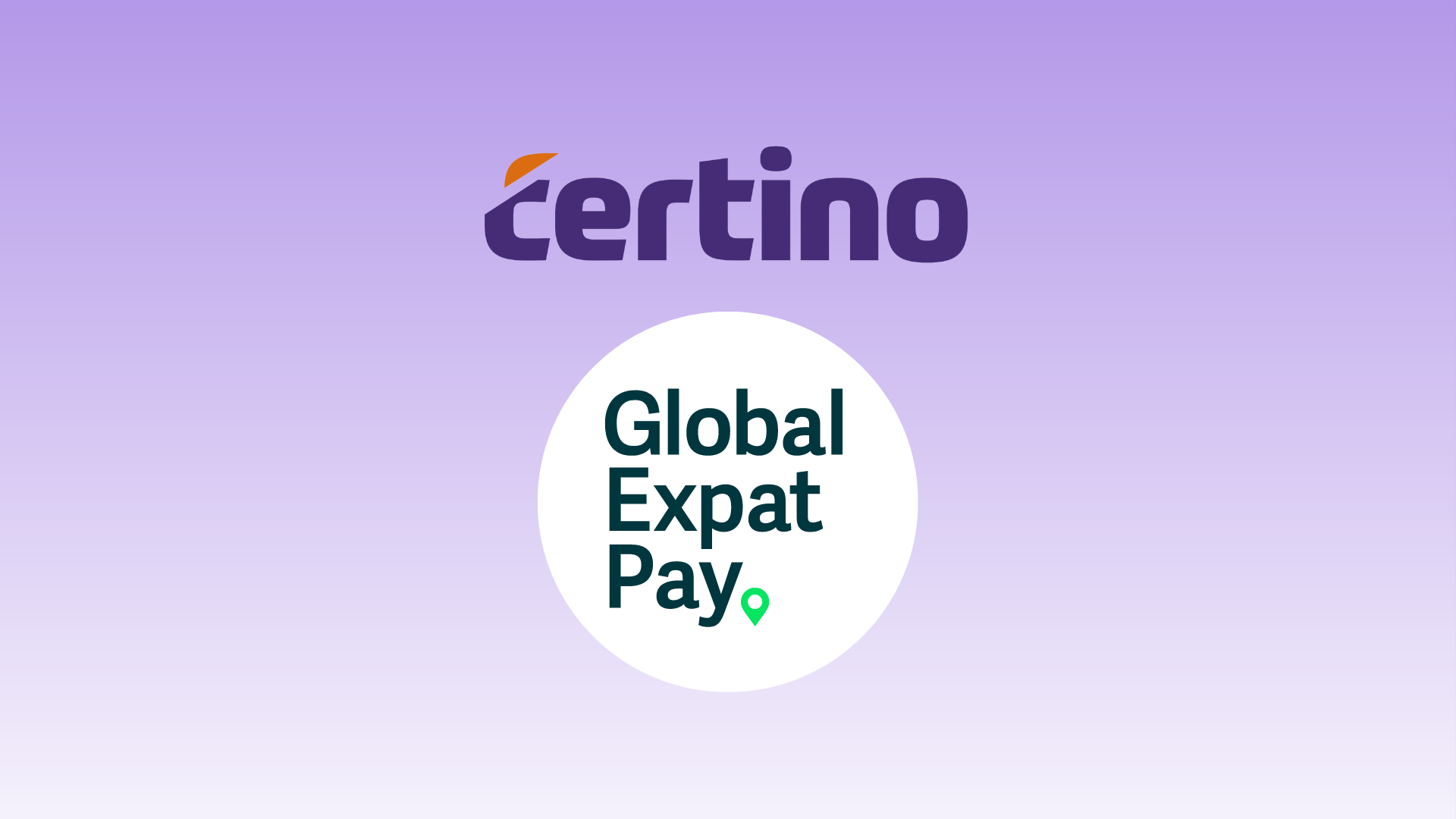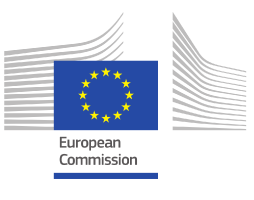For many companies, particularly those in the USA, the 31st December tax deadline saw a huge pre-Christmas exercise to check all global compensation was captured to ensure correct tax and (where applicable), the necessary social security payments had been reported.
Moreover, their tax providers will have felt the pressure to analyse the additional compensation to be reported and prepare any necessary tax gross-ups.
This exercise can be very time-intensive and costly, causing a lot of unnecessary stress when there are so many other tasks also required at year-end. It’s often cited as one of the biggest challenges because there’s usually not a robust, repeatable process to address the volume of disparate data sets and system silos.
Moving into 2022, what key questions do companies want answered? How will companies more efficiently manage their shadow payroll process for compliance and budgeting?
In this Q&A session, our CEO, Richard McBride, outlines his thoughts about the key questions you need to be asking about shadow payroll in 2022. Let’s take a look.
What do you see as the key shadow payroll challenges to plan for in 2022?
The work environment has changed substantially with greater use of technology and new demands from employees concerning their work environment.
This, in turn, has led to much more focus on global mobility and compliance. As the world learns to start living with the situation, the issues that you should be thinking about for 2022 are:
Getting the right policies in place
- Consider if you have the right policies in place for your current globally mobile population? For example, do you need new policies for your remote workers (your virtual assignments, business travellers and cross-border commuters)?
- Do those policies cover compliance in the host country if that is not the employing entity?
Employee considerations
- Are your remote working or mobile employees made aware of their responsibilities and that they could create tax compliance issues for the company and themselves?
- Is there a process of risk management when an employee works away from their normal place of work?
Tax and compliance considerations
- How confident are you regarding whether the company is paying correct tax and social security in the right place at the right time in the right way?
- How could the compliance process, especially that relating to shadow payroll, be made more efficient and less time-consuming?
- Do all your vendors understand your policies and their implications for mobile employees?
Technology considerations
- How can disparate compensation data be provided in a complete and more efficient way for shadow payroll?
- Are you collecting payroll relevant data for your remote workers, commuters, and travellers (e.g. work days vs. days of presence; nature of work etc.)?
- What shadow payroll technology solutions are available in the market to help?
Shadow Payroll Process
Jump to the answers by clicking the links:
What can we expect from a good shadow payroll process?
What are the key components needed for a good shadow payroll process?
What are the appropriate metrics for measuring shadow payroll processes?
What does shadow payroll process standardisation look like?
What can we expect from a good shadow payroll process?
A good shadow payroll process should deliver:
Compliance - Timely and accurate wage reporting and tax withholding to reduce the risk of under-reporting and potential tax authority revenue audit.
Efficiency and effectiveness - The ability to handle compensation data, mapping, country rules/calculation logic and company tax positions in an accurate manner with time pressure.
Improved employee experience - It’s never a good experience for an employee to receive a tax demand, or questioned at the border due to unpaid taxes. A good shadow payroll process should offer a seamless operation and a fully compliant withholding record for both the company and its employees.
Cost transparency and data visibility - A good shadow payroll process should also include reporting capacity that constantly reflects the users’ needs and enhances the mobility programme’s management, from budgeting to data analytics.
What are the key components needed for a good shadow payroll process?
These are the five key components for successful shadow payroll management:
1. Sound understanding of when the liability arises - Visibility of the employee movements (e.g. assignments or travel), tax technical knowledge, in house resource and data availability.
2. Mobility programme data visibility - Timely picture of who is where and what needs to be done.
3. Compensation data - It is common to have five or more data sources inputting into one country calculation. A clean, auditable, and intelligent data process is critical.
4. Strong in-house teams and senior stakeholder support - In-house experts with a combination of tax, data and management skills will be able to work within this complex environment, guide their vendors, and make right decisions under huge time pressure with the support of leadership.
5. Vendor support network - Partnering with specialist vendors who work as an extension to the in-house team increases efficiency, encourages best practice and enhances morale.
What are the appropriate metrics for measuring shadow payroll processes?
To measure the effectiveness of your shadow payroll processes, there are a few metrics you can look at:
Timeliness - are all the filing and reporting done by the set timeline(s)?
Non-compliance incidents - Where payroll is handled in a compliant manner, non-compliance incidents throughout the assignment should be minimised.
Year-end activities - Where monthly reporting is appropriate, an efficient shadow payroll process should help reduce the workload at year end significantly.
In-house team experience - Better process, happier in-house team! Where the in-house team can focus on strategic management rather than manual work or fire-fighting, it in general delivers more job satisfaction and higher retention rate.
Employee satisfaction - Has the payroll process negatively affected the employee’s mobile work experience?
What does shadow payroll process standardisation look like?
Standardisation largely involves the below key components:
- A set of commonly understood and shared goals.
- Standardisation of input and output data. Compensation and basic employee information needs to be shared in global templates using a single language.
- Global mapping. Local compensation elements must be mapped to a global list that has a shared understanding and fully supports processes involving international employees.
- Care must be given to prevent local teams from creating their own variants. While manual processes are more tolerant of variations, the lack of strict standards will impede automation.
Improving Your Shadow Payroll
Jump to the answers by clicking the links:
For those considering bringing efficiencies to their shadow payroll process, what would you consider the best place to start?
Specifically relating to shadow payroll, are there any data validation elements we should be considering as part of our process improvement initiatives?
How does an automated solution help minimise human error during the shadow payroll process?
We would like more awareness on what our options are for managing our shadow payroll processes?
For those considering bringing efficiencies to their shadow payroll process, what would you consider the best place to start?
We recommend you start with standardisation of data input and output, and start with a shadow payroll country where the tax authority requirements are well understood. In addition, the assignees are coming from home countries where the local payroll teams are responsive and using global templates - and there is enough volume to clearly recognise the cost savings, effort reduction, and increased compliance.
You will then be in a good position to use lessons learned to move forward with additional host countries.
Specifically relating to shadow payroll, are there any data validation elements we should be considering as part of our process improvement initiatives?
An ideal process should incorporate multiple layers of data error checking for incoming data, and supports both general and client-specific data validation logic. Where data input is mandatory, default values can also be agreed based on business rules to intelligently address missing data, where appropriate.
Similarly, calculation outputs should undergo a further level of validation to sense check and flag any unexpected results (e.g. extremely high effective rate). Company or policy specific logic can also be built into the process by partnering with your vendor where suitable.
It would be even better if both input and output data is subject to intermittent manual spot-checks by competent operational staff to ensure quality control is effective.
How does an automated solution help minimise human error during the shadow payroll process?
Certino’s solution primarily mitigates the introduction of human error by entirely automating shadow payroll calculations. A given data set processed through our calculation engines will produce the same accurate results every time.
Our clients have found that they have dramatically reduced the time spent reviewing results compared with their legacy processes.
We also have capability in further reducing the risk of human error by automating the consolidation and validation of source data. Instead of exerting great effort trying to identify errors, our clients can now focus on addressing potential issues identified through automated services.
We would like more awareness on what our options are for managing our shadow payroll processes?
Companies manage their shadow payroll in many different ways, and some typical approaches are:
- Companies with large volumes of mobility workforce, often with a more comprehensive reward and compensation system, tend to work with global branded accountancy firms on expatriate tax related matters as well as shadow payroll.
- Companies with smaller volumes and a more simplified compensation structure tend to work with either their local payroll provider, or handle the cases in house with external advice. Management can be centralised or de-centralised.
- Some companies adopt an estimation approach where an estimated amount of taxes is paid over via shadow payroll and then resort to year end reconciliation and tax return filing to true up the liabilities.
Global Shadow Payroll and Integration
Jump to the answers by clicking the links:
What advanced capabilities should be considered in supporting shadow payroll processes, especially when locations are global?
Do you always need a local payroll provider to assist with the Shadow Payroll process? We have a project where we don't have one and struggle with our usual global tax adviser to provide local services.
What is the benefit that Certino brings against a local payroll delivering this service?
We have several payroll teams globally all trying to manage the shadow payroll process independently. Some have better understanding than others. How can we improve this situation with a specialist provider?
How does a shadow payroll solution, like that of Certino’s, integrate with our local payroll teams?
What advanced capabilities should be considered in supporting shadow payroll processes, especially when locations are global?
Among the wonderful technological capabilities out there, the below would be a good starting point:
Automation of calculations
At the core of the shadow payroll process is the calculation of withholding liabilities. An automated global calculation solution would therefore mean timely turnaround of accurate payroll withholding results and less vendor management, which offers in-house teams much more control over the monthly (or bi-monthly) process.
Data handling
Where required, the process should also be able to consolidate various data input into a global format pre calculations.
Input data should also be subject to a data validation process to enforce established data rules, and perform value threshold and sense checks.
Incoming and outgoing data can be managed according to the capabilities and preferences of the client - from manual transfers to full application programming interfaces (APIs).
Intelligent reports
Data visualisation and analytics, where quality data is available, can not only deliver much needed visibility and control, but also drive better decision making.
Do you always need a local payroll provider to assist with the Shadow Payroll process? We have a project where we don't have one and struggle with our usual global tax adviser to provide local services.
Some country tax authorities require shadow payroll submissions through a certified payroll system, while others do not. If it's the former, then a local payroll system is required for submissions.
Where Certino provides the shadow payroll services, we will prepare the calculations and payroll instructions for the local payroll. If one of our clients doesn't have a local payroll provider, or would prefer not to use one, we introduce them to a local tax provider who can make local payroll submissions on their behalf.
🔎 Top tip: Automation and the use of API technology can significantly streamline a company’s shadow payroll process. That’s why we’re seeing many global mobility teams planning to automate shadow payroll, which allows them to concentrate on more challenging and value enhancing jobs.
What is the benefit that Certino brings against a local payroll delivering this service?
The Certino application is able to, among other tasks:
- Take into account tax positions appropriate for mobile employees, be it long term assignees or short term secondees, that may not be applicable for a local employee.
- Perform appropriate gross up calculations that local payroll may or may not be able to do.
- Generate consistent results automatically within minutes and hours.
- Incorporate shadow payroll specific checking points.
- Centralise all the calculations in one place for ease of in-house team to manage.
We have several payroll teams globally all trying to manage the shadow payroll process independently. Some have better understanding than others. How can we improve this situation with a specialist provider?
It is not uncommon for local payroll to run shadow payroll to suit their own process. However, for a global process, all teams appreciate consistency and clarity, which a specialist provider can provide and enhance. Plus, an automated solution also lends itself to the centralisation of services.
Using Certino as an example, during our onboarding process, much is done to improve the process standardisation for all locations. For example, input data requirements will be agreed and adhered to; global wage codes would be created/checked, global mapping will be established to record tax treatment, country tax positions are designed to be uniform with clear indication of country-specific exceptions, and output payroll instructions can be configured to be easily consumed by local teams.
A consistent and standardised process also makes centralisation of shadow payroll management much easier. Our clear data requirements, fast processing, and consistent, accurate results facilitate the transition of most shadow payroll processes from several independent local teams to one smaller global team.
We can offer specialist support, where needed, to streamline the local upstream data collection process. Simplified data collection in turn frees in-house talent up to other value-adding activities, which is always welcomed by local teams, making them far less resistant to the change in process.
How does a shadow payroll solution, like that of Certino’s, integrate with our local payroll teams?
Local payroll teams always appreciate it when receiving clear and system-compatible payroll instructions for processing. It is therefore beneficial to work with your shadow payroll provider to template the payroll instructions based on local payroll’s requirements.
Certino’s typical output results include taxable compensation, income taxes, and (employee and employer’s) social security obligations that are specially designed to meet the local shadow payroll filing requirements. Where special categories of data are required (e.g. one-time payment; payment subject to special rates etc.), these are also provided as part of the payroll instruction.
These calculated outputs can be further mapped to specific local payroll system fields and our output reporting templates can be configured to support filing through payroll systems.
Certino also delivers according to the agreed global payroll schedule to relieve local payroll from stressful situations caused by last minute instructions!
Shadow Payroll and Tax Management
Jump to the answers by clicking the links:
How does a shadow payroll vendor, like Certino, align on our company policies, policy specific tax positions, local payroll/tax rules, social security considerations, tax residency, etc?
We typically work on a host-based policy with little tax equalisation. Will Certino’s solution work for that?
How does Certino maintain your core tax engine for updates?
How does a shadow payroll vendor, like Certino, align on our company policies, policy specific tax positions, local payroll/tax rules, social security considerations, tax residency, etc?
When Certino onboards a new client, we typically start with understanding your policy types and specifics. This helps us to form the basis of your global tax positions which will then be complemented by country specific tax positions when a new country is onboarded. The tax positions could be with respect to the policy set up, local tax agreements, social security agreement and rates, and whether any special tax regimes are in place.
Global and relevant country tax positions are discussed at the outset to ensure that relevant stakeholders are aligned so that our tax engine can be configured to that client's agreed assumptions and compliance needs.
Certino, where required, can also work with the client, their local payroll teams and external partners as necessary to determine the tax positions to be used for that particular traffic lane (e.g. social security considerations).
The running of monthly calculations will only proceed once this step has been concluded and signed off. We take great care with efforts in this process, as it lays out the collectively agreed foundation of monthly automated payroll runs.
On an ongoing basis, some specific details are required at an individual level such as residency status, family situation and social security liability, and this forms part of the data to be provided to Certino, which ensures that the calculation is done to reflect not only the global positions of the client as well as individual situations where appropriate.
We typically work on a host-based policy with little tax equalisation. Will Certino’s solution work for that?
This would form part of the shadow payroll tax position discussion and process design during implementation. Our tax engine can perform net to gross, gross to net, or partial gross up calculation, depending on the country position and data input.
However, where host based assignees are paid a local salary on local terms and conditions, it may be that inclusion on the host payroll to calculate their net pay would be the preference if possible. Our tax engines are designed to replicate the host payroll system calculation where it is shadowing an actual payroll for compliance and reporting purposes, and therefore do not include some of the nuances of an actual local payroll, such as local benefits or locally required insurances.
We would need to understand and review your host based policy and your current process to understand your requirements to determine what solution could be offered. In short, Certino solution would work to shadow an actual payroll although we would need to work together to ensure that this is the right solution for you.
How does Certino maintain your core tax engine for updates?
Tax engines are updated as soon as legislative changes are announced and reviewed regularly. Our team of inhouse tax specialists keep a close eye on all legislation updates for all territories within the tax engine. Once a year, without fail all territories are reviewed and updates made.
Shadow Payroll Solutions and Certino
Jump to the answers by clicking the links:
How to choose a specialist shadow payroll tool/provider?
What services do Certino provide for shadow payroll and what are your technical capabilities?
What security standards does Certino's platform adhere to?
Where does the Certino solution fit within the shadow payroll process?
How does Certino bring value and significant savings to clients?
How to choose a specialist shadow payroll tool/provider?
Choosing a shadow payroll service provider can be a difficult task. Sometimes it is easier to work with your tax providers, while other times a specialist service provider can be a more fitting option.
The below factors should be considered when shortlisting the potential candidates.
- Services offered: Could the vendor handle all shadow payroll calculations (gross to net, net to gross, and partial gross up etc.)?
- Service integration: Can the provider’s platform and services be rapidly integrated with other products and internal tools and your vendors to help join the dots in the overall shadow payroll process?
- Country coverage: Do they cover the locations you require for your mobile workforce?
- Client testimonials: Do they have a good track record onboarding and working with clients similar to your own organisation?
- Calculation capabilities: Can handle the assignment volume you require? Do they deliver fast, reliable shadow payroll calculations?
- Vendor team: do they have the right combination of skill sets, experience, and culture to work with your own in-house team?
- ROI: Are their services priced to show value and will their involvement reduce your operational overheads and remove slow, manual processes?
How Certino can help:
Whether you're an organisation with an internationally mobile workforce looking to streamline shadow payroll, or a tax or payroll provider looking to improve shadow payroll processes for clients, we can help you. Explore more.
What services do Certino provide for shadow payroll and what are your technical capabilities?
Expansive coverage
Certino has developed and maintained shadow payroll tax calculation engines for over 90 countries. The global tax engine delivers automated shadow payroll calculations within minutes. The calculation logic and performance is reviewed and certified by our tax advisor to ensure accurate and consistent results.
Dedicated onboarding services
During client onboarding, we partner with our clients to confirm their country tax positions so that we can establish mandatory and optional data requirements. We then proceed to establish data sources and processes for transferring, consolidating, and validating the required data, which is key to automation of each payroll run.
Centralised client support
We have a centralised client support approach where you will have a small but dedicated client support team handling all of your global shadow payroll queries and service support.
Our tax and client service teams are formed by expatriate tax professionals with extensive experience (mostly with Big 4 and in-house global mobility roles) in mobility tax and tax technology. Qualifications held include: ATT, CIOT, ACCA and ACA.
Quality delivery
The output format can vary by country, depending on client needs. Tax providers typically require reviewer-friendly formats while payroll teams may need a system-specific interface format. We can template our output to ensure the output can be consumed by downstream vendors in the most user-friendly way.
What security standards does Certino's platform adhere to?
Our business maintains ISO27001, GDPR and SOC certifications, among other security and quality control measures we put in place internally, meaning Certino's platform and processes will be compliant with the most stringent technical and information security due diligence.
Where does the Certino solution fit within the shadow payroll process?
Certino's shadow payroll platform sits at the heart of the shadow payroll flow (see graph below) and addresses one of the biggest and most expensive pain points in that process - accurate, cost-effective and timely calculation of taxes due.
How does Certino bring value and significant savings to clients?
The Certino shadow payroll solution has proven to reduce in-house team workloads, reduce tax provider fees, and enhance compliance. Client teams also benefit from the consistency our solution delivers as they develop more control over the process.
Here are some recent client results:
- Average delivery cost per assignee - saved 70% of overall annual operating costs, primarily through reduction of third-party vendor costs
- On time % to pay tax before deadline - achieved 100% of monthly filings on time and enabling the tax provider's greatly improved 80% of tax returns filed on time
- Accuracy % of tax filing - reduced the need for filing amended W2 forms by 99% (amendments due to late sourcing of data, not calculated results)
This recent case study also showed a range of qualitative improvements, that while more difficult to directly measure, have been very beneficial and greatly valued by the client.
Case study: Certino helps a multinational company save 70% of US operating costs by automating shadow payroll. Read it here now.
All our product and service offerings are designed in collaboration with the market and our clients. We have a strong commitment to continuous improvement in all aspects of our services. We use ongoing feedback and customer satisfaction scores to ensure the continued evolution of our services post-release.
Next steps
We are currently moving towards a world where it is becoming extremely important for companies to modernise at pace. With the ever-growing need for efficiency and access to new technologies, automated shadow payroll processes have become imperative for companies with a globally mobile workforce - helping to tackle issues such as disparate data sources, complexities and lack of accountability.
So, while you might tend to think about shadow payroll reconciliation at the end of the tax year, you can avoid the problem entirely by adopting an automated shadow payroll platform.
Benchmark your shadow payroll process
You can benchmark your shadow payroll process and understand how to make significant cost and time savings with our comprehensive guide: The Shadow Payroll Maturity Model.
Ready to simplify your shadow payroll? Learn more or Book a consultation now.








